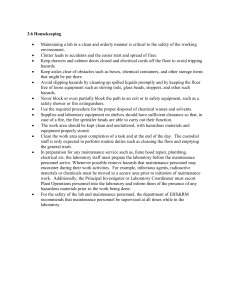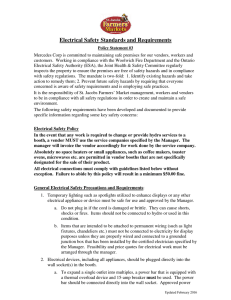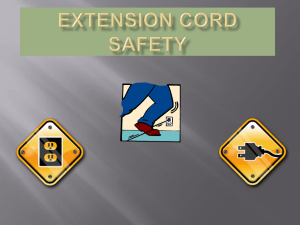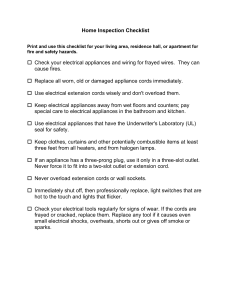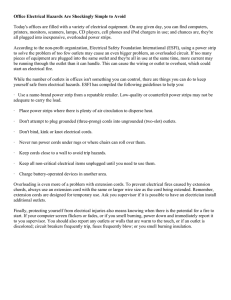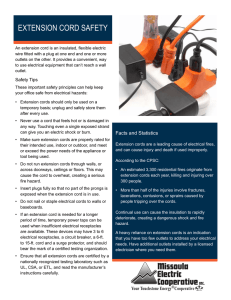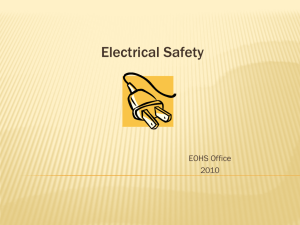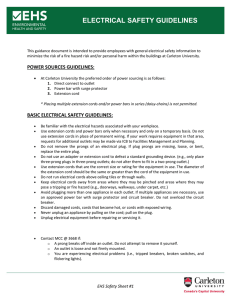7.0 Electrical Safety Electrical Hazards can cause: • Electrical Shock
advertisement
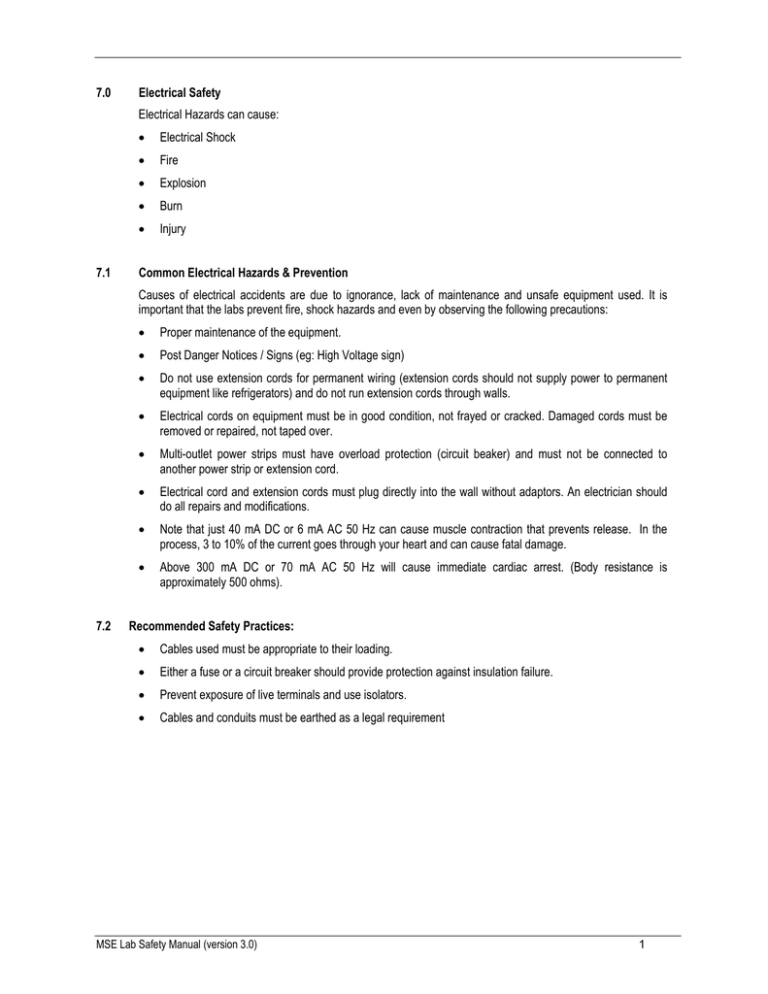
7.0 Electrical Safety Electrical Hazards can cause: 7.1 • Electrical Shock • Fire • Explosion • Burn • Injury Common Electrical Hazards & Prevention Causes of electrical accidents are due to ignorance, lack of maintenance and unsafe equipment used. It is important that the labs prevent fire, shock hazards and even by observing the following precautions: 7.2 • Proper maintenance of the equipment. • Post Danger Notices / Signs (eg: High Voltage sign) • Do not use extension cords for permanent wiring (extension cords should not supply power to permanent equipment like refrigerators) and do not run extension cords through walls. • Electrical cords on equipment must be in good condition, not frayed or cracked. Damaged cords must be removed or repaired, not taped over. • Multi-outlet power strips must have overload protection (circuit beaker) and must not be connected to another power strip or extension cord. • Electrical cord and extension cords must plug directly into the wall without adaptors. An electrician should do all repairs and modifications. • Note that just 40 mA DC or 6 mA AC 50 Hz can cause muscle contraction that prevents release. In the process, 3 to 10% of the current goes through your heart and can cause fatal damage. • Above 300 mA DC or 70 mA AC 50 Hz will cause immediate cardiac arrest. (Body resistance is approximately 500 ohms). Recommended Safety Practices: • Cables used must be appropriate to their loading. • Either a fuse or a circuit breaker should provide protection against insulation failure. • Prevent exposure of live terminals and use isolators. • Cables and conduits must be earthed as a legal requirement MSE Lab Safety Manual (version 3.0) 1
